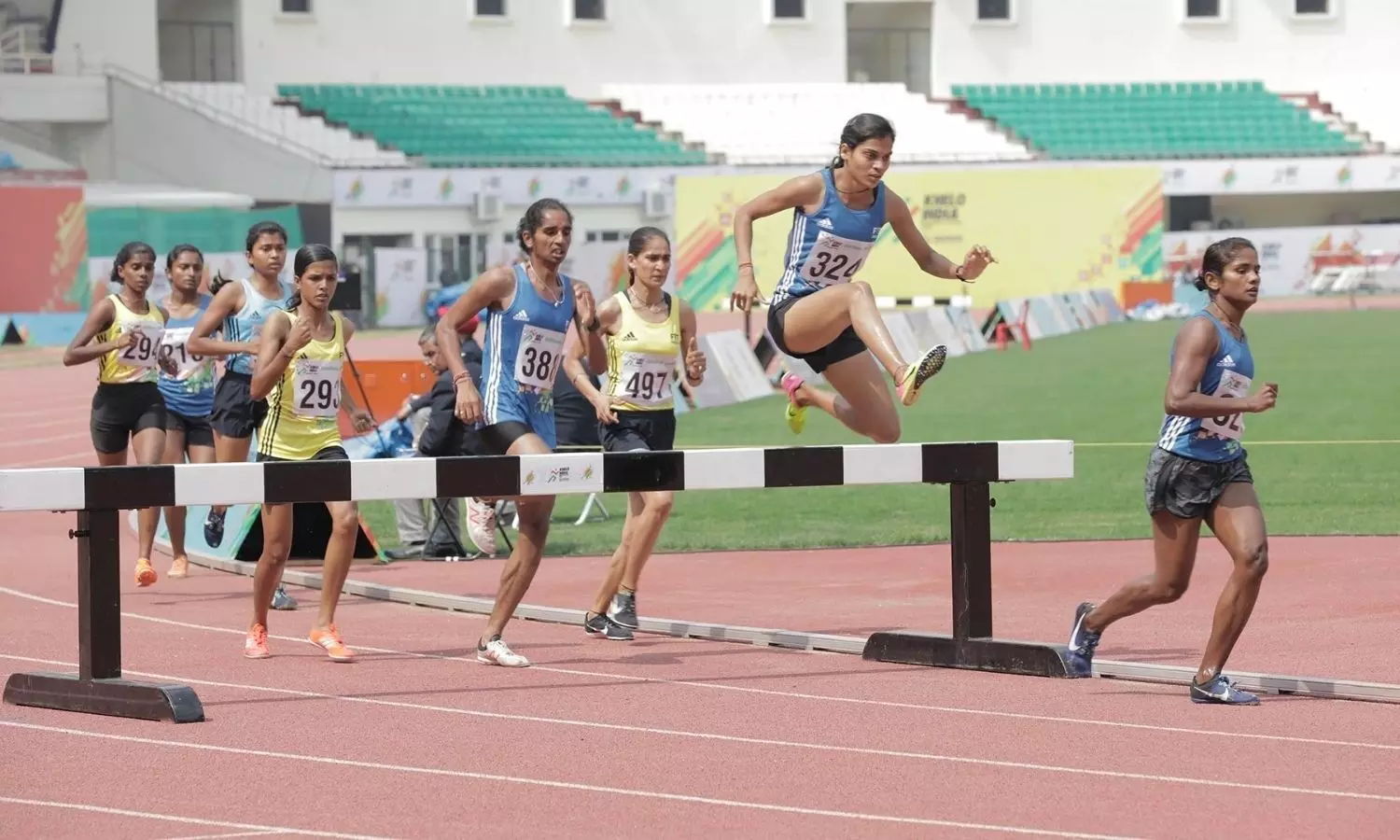Khelo India University Games
Khelo India: Why India's college sports ecosystem needs to step up and get technically sound
Despite the budget hike for Khelo India, a change is required from within to reach the level of US collegiate sports to ensure more talents like Jyothi Yarraji and Jeswin Aldrin are found timely.

Steeplechase at the Khelo India University Games 2020 (Source: Khelo India Games website)
At first glance, the resumption of the Khelo India University Games – scheduled to be held in Bangalore from April 24th to May 3rd – after a year's break due to the COVID-19 pandemic doesn't seem like a particularly big deal.
One can of course reason that the ongoing IPL has captured the bulk of media attention and is catering to the cricket-crazy public's eyeballs but it's also to do with the fact that University sports generally don't usually register very prominently in the Indian sporting calendar.
There's also the fact that the absence of the previous year's edition hasn't really been felt. After all, despite the cancellation of the previous edition of the tournament, several national tournaments have taken place.
The budget spike for Khelo India
Yet despite this measure of indifference to overcome it's clear that the powers that be expect much from the Khelo India program. This year the Government of India hiked the Khelo India budget from 657 crores to 974 crore - accounting for a whopping increase of 317 crores. This is about 30 per cent of the entire sports budget and far more than the 653 crores allocated to the Sports Authority of India.
Furthermore, this edition of the Khelo India University games which will see 4529 participants competing for over 200 gold medals in Bangalore is also likely to be the biggest domestic sporting event in the country in the last couple of years.
READ | Why pumping money into Sports Budget is a double-edged sword
This is a welcome thing for many reasons. The first is of course talent scouting. Across the world, and especially in the USA, Universities have been the incubator for grooming talent for major elite competitions.
In the USA, for instance, the NCAA Championships is a huge affair that honestly dwarfs the Khelo India Games in size and scope. In the most recent edition of the NCAA for instance some 1.76 lakh athletes competed in just the division 1 (highest level of competition) level.
The NCAA system is a proven pathway to producing high-level athletes. Indeed there are several Indian athletes like former top 70 tennis player Somdev Devvarman and Olympic discus finalist Vikas Gowda who have been developed and produced through the NCAA system.
'Spotting' talent in India
Closer home, in India, for the most part, talent scouting usually happens outside the university or school system. Athletes usually compete at the district level competitions organised by a sports federation, then progress to the state and national level where they are usually 'spotted.'
This isn't due to any inherent superiority of the state or national federation of the respective sport but because the priority for the most part in educational institutions is studied largely at the expense of sports. In most Indian schools and universities, there is a blatant partial behaviour shown towards academics with children conditionally making a beeline for the staple engineering, medical and law pathways, pushing sports to an afterthought.
Unfortunately for the most part it is also true that the Indian school and university sports setup often runs at cross purposes with 'formal' structures such as the national federations. When school and university games do take place, they are often conducted in the absence of suitable technical officials.
An instance of this was seen at last year's Inter-University Athletics Championships where Jyoti Yarraji ostensibly broke the national record in the women's 100m hurdles but was denied the achievement since the tournament organisers didn't arrange the dope control needed for the achievement to be ratified.
The ailing drawbacks of the school and university system
Furthermore, it's only a relatively small proportion of schools and universities in India that have the facilities and resources to develop talent. This can be seen in the case of long jumper Jeswin Aldrin who at this month's Federation Cup made the biggest jump made by an Indian long jumper.
Aldrin's talent was first spotted at his school by his PT Coach but due to a lack of technical knowledge and resources, his real development as an athlete didn't occur until much later.
While Aldrin has managed to stay in the system long enough to get the support he needed, there would be many cases of athletes whose careers blossom and then fade away within the school and university system itself.
In light of this, the Khelo India program is an important first step but it's not enough to conduct a single university or school games. If India has to develop a steady assembly line of talent over the next decade, a widespread collegiate competition platform needs to be created with regular competitions happening across multiple levels.
